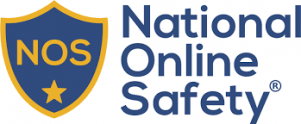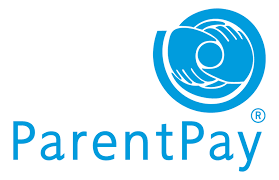More in this section...
E-Safety
The internet offers a fantastic opportunity for children and adults alike to access information and communicate with one another; however it can be daunting to know where to start when wanting to protect our children online.
What we do at Hookstone Chase to target E-Safety
E-Safety is an important part of keeping children safe online. We have measures in place in school, which are constantly monitored, to help safeguard pupils from any potential dangers. E-Safety is taught to all pupils explaining and demonstrating how to stay safe and behave appropriately online.
We can only be successful in keeping children safe online if we work with you to ensure the E-Safety message is consistent. Your help is needed to talk to your children about how they can keep safe and behave appropriately online. The widespread availability and use of social networking application bring opportunities to understand, engage and communicate with audiences in new ways. It is important that we are able to use these technologies and services effectively and flexibly. You may find you children asking to engage with technology that you have no knowledge or experience of.
Children are accessing a greater amount of content online, than we were ever exposed to in our childhood. Remember that services like TikTok and YouTube have a minimum age limit of 13. They do this for a reason. If you choose to allow your children to have these accounts then you will want to discuss with them the boundaries you expect. You will find children can accidently or deliberately be exposed to unwanted or unpleasant content or comments online and there are steps you can take at home to minimise this risk.
What you can do as parent/carers to target E-Safety
Ground Rules
- Discuss as a family how the internet will be used in your house. Consider what should be kept private online (personal information, photos etc.) and decide rules for making online friends. Make sure you know what your child is doing online much like you would offline.
Online Safety
- Install antivirus software, secure your internet connection and use Parental Control functions for computers, mobile phones and games consoles to block unsuitable content or contact
- Remember that parental control tools are not always 100% effective and sometimes, unsuitable content can get past them, so don’t rely on them alone to protect your child.
Location
- Think about devices only being used in a supervised family area. Always supervise the use of webcams in an application, which allows voice or video chat. Consider your child’s use of other devices that allow internet access, such as, mobile phones and tablets.
Dialogue
- Talk to your child and ask them to show or even teach you how they use the internet, learn which websites, apps or tools they like to use and why. Learning together can often open opportunities to discuss safe behaviour with your child.
- Always ensure your child knows they can block or report people online who send nasty or inappropriate messages or content. Encourage your child not to retaliate or reply.
- Make sure your child knows to tell an adult they trust if they see something online that makes them feel scared, worried or uncomfortable.
- Education around safe use is essential.
 National Online Safety provide a variety of information and guidance relating to online safety and key information that parents/carers need to know about popular apps and games that children may be accessing. You may find the documents below helpful to keep you informed as a parent/carer:
National Online Safety provide a variety of information and guidance relating to online safety and key information that parents/carers need to know about popular apps and games that children may be accessing. You may find the documents below helpful to keep you informed as a parent/carer:
- Safe & Healthy Online Habits
- How to Combat Online Cyber Bullying
- Youtube
- Parental controls for apps - Android
- Parental controls for apps - Apple
- What Parents and Carers Need to Know about - Among Us
- Setting Boundaries Around Gaming
- Tik Tok
- Live Streaming
- Tech Free Christmas
- Snapchat
- Fortnite
- Sharing Photos Online
- Roblox
- Minecraft
- Social Pressures Linked to Likes
- Facebook Messenger
- Online Financial Scams Exploitation
- What Parents Need to Know About Friends Followers
- X (formerly Twitter)
- Social Media and Mental Health
- NGL (Not Gonna Lie)
- What Parents Need to Know About Music Streaming App Sites
- Threads
- Social Pressure Linked to Influencers
- Supporting Children to Deal with Upsetting Content
- Group Chats
- Pop-up Ads
- Stay Safe Online This Summer
- Age Appropriate Content
If you have any queries or concerns regarding E-Safety or the content your child is being exposed to, please speak to our Pastoral Lead, Mrs Lee, for further guidance.




